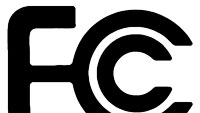FCC embraces open information online

The Federal Communication Commission, under the leadership of Chairman Julius Genachowski, has made significant moves toward making its previously serpentine movements more transparent, both to the industries it regulates and the public it serves. In the past, FCC proceedings and actions have been obscured in a difficult-to-navigate Web site with little public notice of postings, and, once posted, the documents themselves were often offered in opaque “bureaucratese” with no further comment.
In recent months, the commission has rolled out an array of new media tools, making it much easier to track its activities. These tools include written and video-driven blogs, Web sites, an RSS feed and the use of social media including Twitter, Facebook and YouTube.
One key site is OpenInternet.gov, designed to encourage discussion on its namesake topic. The site offers Chairman Genachowski’s recent speech on net neutrality and encourages the posting of comments in the style of a typical new site. Another FCC-driven site is Broadband.gov, which covers the related issue of the Federal Broadband Plan mandated (and ultimately funded) by the American Recovery and Reinvestment Act of 2009. This site includes a schedule of workshops for stakeholders in the future of broadband Internet.
On the social networking side, the FCC now boasts its own YouTube channel, which includes a variety of videos ranging from policy statements and speeches to the entirety of a recent FCC Open Commission Meeting. While some videos are brief and informative, the meeting video is presented in all of its 4.5-hour glory, rather than being broken into manageable chunks — but it’s a huge step forward.
On Facebook, there’s the FCC fan page that’s full-featured and updated often with notification of meetings and events, live logging of selected meetings, and links to related points of interest. The FCC even invites public input and questions via Twitter/FCC, including live Q&A during public hearings.
While most of this new transparency is directly related to the net neutrality debate and national broadband initiative, this new look, open FCC is encouraging. All we need now is similar clarity on broadcast-related issues like white spaces, TVBD definitions, the fate of 700MHz wireless mics and the national RF frequency database.
Get the TV Tech Newsletter
The professional video industry's #1 source for news, trends and product and tech information. Sign up below.
